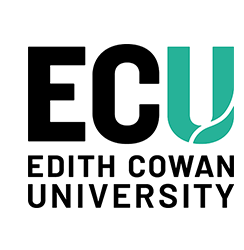Author Identifier (ORCID)
Enoch Odame Anto: https://orcid.org/0000-0001-9023-6612
Abstract
Background: Neutrophil gelatinase-associated lipocalin (NGAL) is present in secondary granules of neutrophils and it is a relatively newly recognized marker of kidney diseases. The fibrinogen-to-albumin ratio (FAR) is a marker of inflammation but its diagnostic value has not been determined in sickle cell disease patients with kidney diseases. This study investigated the diagnostic roles of serum neutrophil gelatinase-associated lipocalin (sNGAL) and FAR for kidney diseases in steady-state adult sickle cell disease (SCD) patients. Methods: This study employed a prospective case-control design and recruited 104 SCD participants and 80 non-SCD patients. Participants’ information was thoroughly documented using a structured questionnaire and patient case records. To evaluate the hematobiochemical parameters, 5 ml of venous blood was drawn from each participant and a clean catch of midstream urine was collected from each participant. The cases and controls were further categorized into microalbuminuria and non-microalbuminuria subjects, following three consecutive urine albumin-to-creatinine ratio (UACR) measurements. Results: The prevalence of microalbuminuria was 32.7% among adult steady-state SCD patients. Significant higher levels of sNGAL and FAR were detected in SCD patients with microalbuminuria than in SCD patients without microalbuminuria and controls (p < 0.001). A moderate positive correlation was observed between sNGAL and UACR (r = 0.45, p = 0.007). A unit increase in sNGAL (cOR: 3.25 (2.11-5.00); p < 0.001), aOR: 3.35(2.09–5.36); p < 0.0001)) and FAR (Log cOR: 12.26 (1.82–25.09); p = 0.022) were significantly associated with increased odds of kidney disease among SCD participants. sNGAL emerged as a highly early predictive marker for kidney disease in SCD patients, with a cutoff value of > 5.72 µg/L yielding a high area under the curve (AUC = 0.854, p < 0.0001). sNGAL also demonstrated an excellent sensitivity (91.2%) and moderate specificity (74.7%). The FAR at a cutoff of > 0.09 also demonstrated significant predictive value (AUC = 0.630, p = 0.009) for kidney disease in SCD patients, with a moderate sensitivity (67.6%) and specificity (61.3%). Conclusion: Based on our findings, sNGAL could serve as an independent early predictor of kidney disease compared with urea and creatinine. Additionally, the fibrinogen-to-albumin ratio can be used as inflammatory marker for kidney diseases in SCD patients. Clinical trial number: Not applicable.
Document Type
Journal Article
Date of Publication
12-1-2025
Volume
26
Issue
1
PubMed ID
40883664
Publication Title
BMC Nephrology
Publisher
Springer
School
School of Medical and Health Sciences
Creative Commons License

This work is licensed under a Creative Commons Attribution-Noncommercial-No Derivative Works 4.0 License.


Comments
Twumasi, S., Anto, E. O., Obirikorang, C., Ephraim, R. K. D., Sackey, B., Paintsil, V., Ansah, R. O., Effah, A., Ayirebi, A. A., Opoku, A., Scott, G. Y., Osei, L., Duku, J., Adjei, E. A., & Boateng, L. A. (2025). Neutrophil gelatinase-associated lipocalin and fibrinogen-to-albumin ratio are indicators of kidney disease in sickle cell disease patients with microalbuminuria: A multicentre case-control study in Ghana. BMC Nephrology, 26. https://doi.org/10.1186/s12882-025-04427-2